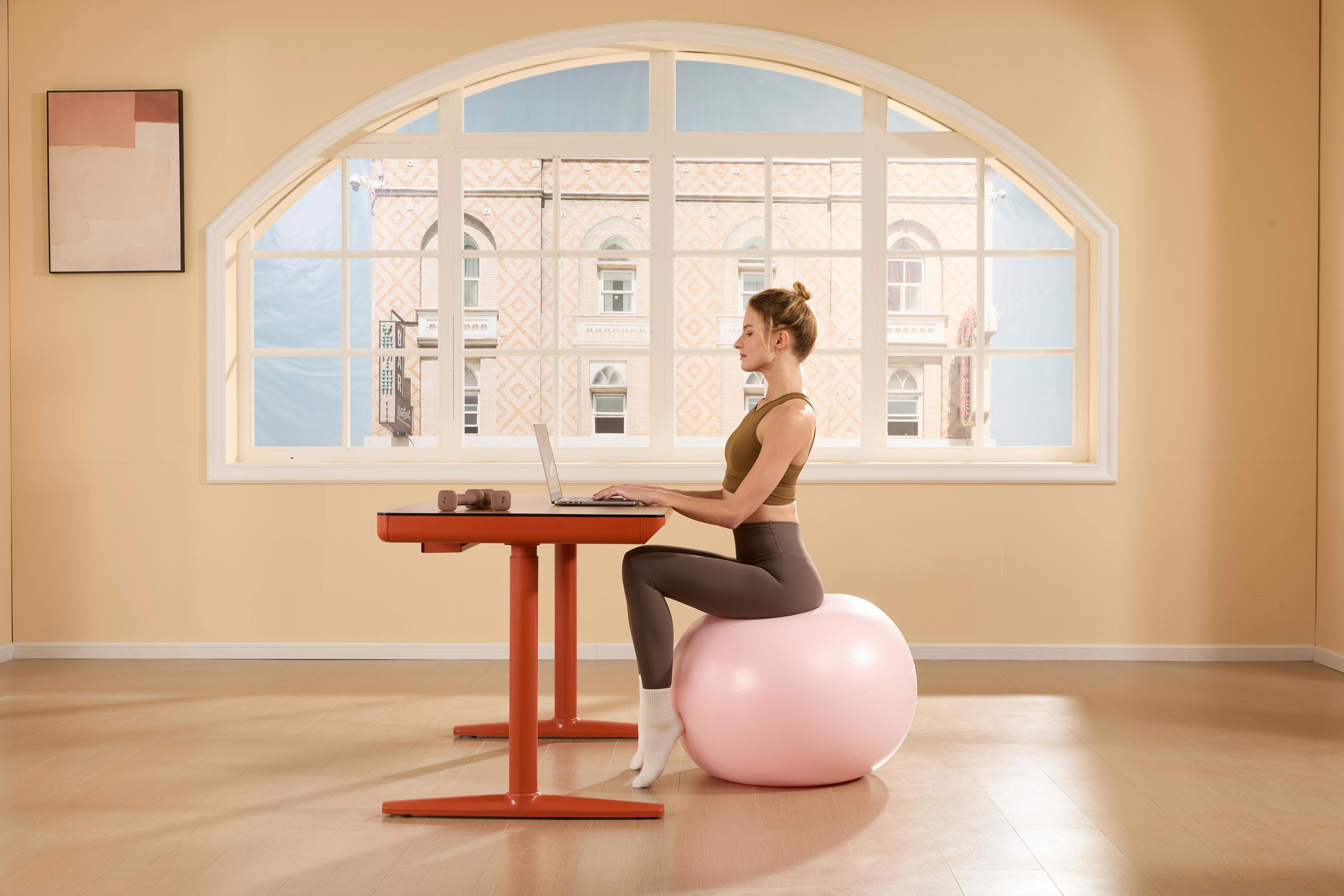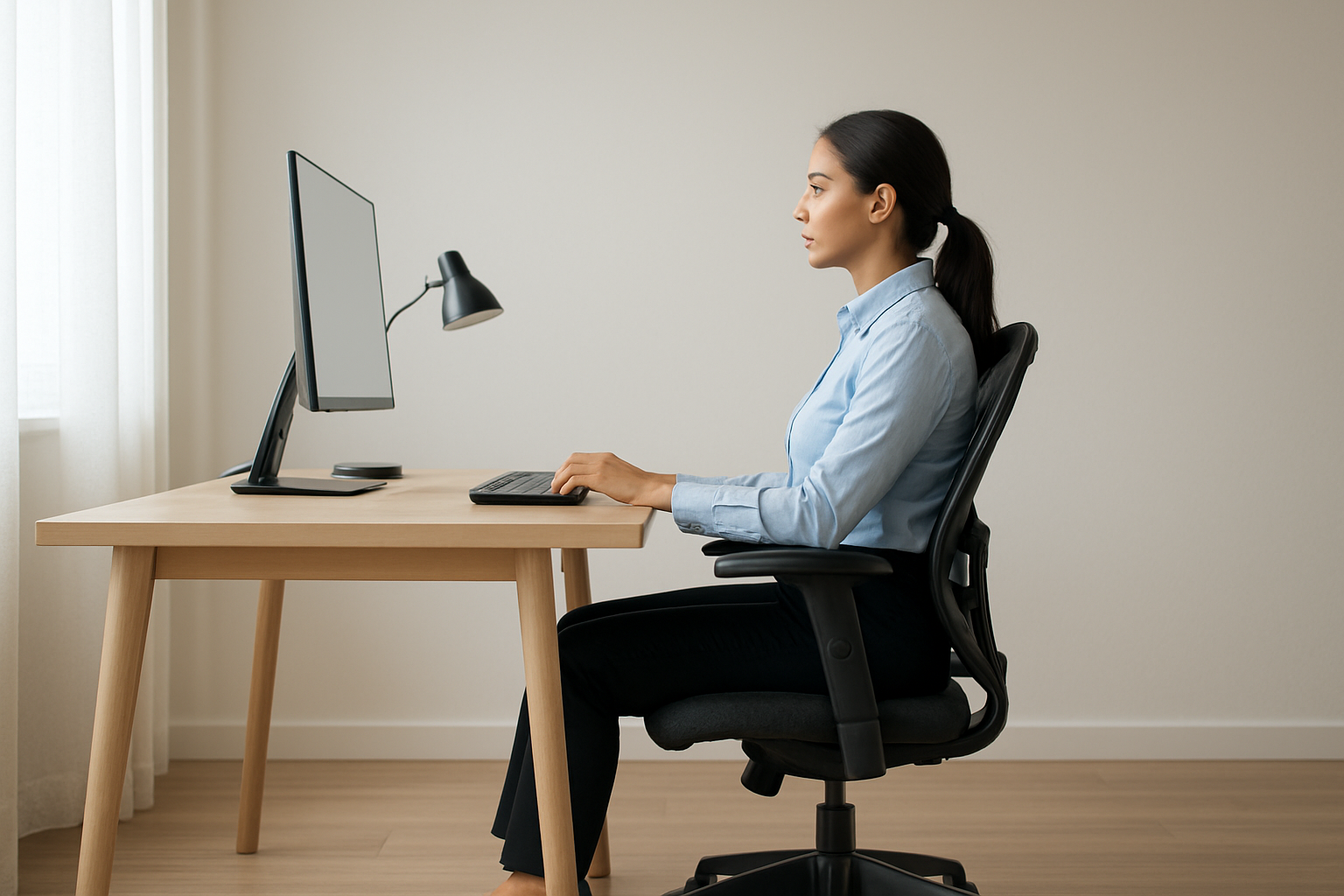Perfect Posture at Your Desk

What “perfect posture” really means (and why it matters)
This article shares general ergonomic guidance and is not medical advice. If you have pain, numbness, or other symptoms, please consult a licensed clinician.
Perfect posture is not rigid or military straight. It is a relaxed neutral spine with a gentle S curve. In this position your ears, shoulders, and hips line up naturally, your shoulder blades rest without pinching, and your chin is slightly tucked rather than reaching forward. Neutral alignment lets joints sit near the middle of their range so muscles do less work to hold you up.
Try a quick self check. Sit back so your sit bones carry the load and keep both feet flat at about hip width. Let your knees be close to ninety degrees. Keep the pelvis neutral, relax the shoulders, and keep elbows near your sides with forearms level to the desk. If you find yourself looking up or down, raise or lower the screen so the top third of the display sits at or just below eye level. Your breathing should feel easy in the belly and ribs. If it feels stuck in the upper chest you may be over arched or slumped.
Why this matters. Sustained poor posture can contribute to neck and back pain, tension headaches, nerve irritation, and repetitive strain in the wrists and shoulders. It can also increase disc pressure, reduce lung expansion, slow circulation, and drain energy and focus. Following established ergonomic guidelines helps you stay comfortable through long sessions while protecting long term health and performance.
The best posture is a series of good postures. Stay mostly neutral, change position often, stand briefly, and take short movement breaks to keep tissues healthy and attention sharp.
Step-by-step: dial in chair, desk, and monitor height
Start with the chair: sit back so your lower back touches the backrest and your feet rest flat on the floor. Your knees should be near a 90° angle; use a footrest if needed. Set your desk or keyboard height so your elbows hover around 90° with shoulders relaxed and wrists straight. Finish by raising your monitor so the top third of the screen sits at or slightly below eye level. If you use two screens, make the primary display directly in front of you to avoid neck rotation.

Move on a schedule to prevent stiffness
Posture is dynamic, not a statue pose. Use micro-breaks to reset your body and eyes: stand, roll your shoulders, and glance at a distant point to relax eye muscles. A simple cadence many teams use is the “20-8-2” rhythm roughly twenty minutes of sitting, eight of standing, and two of light movement. Short stretches or quick desk exercises are enough to keep blood flowing and energy steady.
Accessories that support great posture (without overthinking it)
Small upgrades can make neutral alignment effortless: a lumbar pillow maintains the natural curve of your lower back, an adjustable monitor arm aligns screen height in seconds, and a compact keyboard keeps your elbows closer to your sides to reduce shoulder load. If you switch between sitting and standing, confirm your wrists stay straight in both positions.